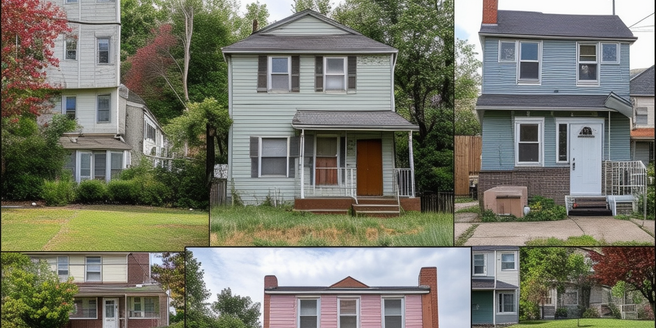Understanding the Basics of Section 8 Housing
Section 8, or the Housing Choice Voucher Program, is a federal initiative designed to alleviate housing costs for low-income households, primarily by subsidizing a portion of rental costs or making homeownership affordable. The program varies in its support; it may offset some rental fees or facilitate pathways to homeownership for eligible beneficiaries. Regardless of how it lends a hand, Section 8’s core objective remains the same – to help struggling households secure stable, long-term housing, contributing significantly to combatting the housing crisis faced by many in the United States.
Myth: Section 8 Houses are Only in Poor Neighborhoods
Many people mistakenly believe that Section 8 recipients are restricted to living in ‘poor neighborhoods.’ In reality, the Section 8 program offers a great deal of flexibility, allowing beneficiaries to choose any housing, including single-family homes, townhouses, and apartments, that aligns with the program’s rules and regulations. The socioeconomic status of a neighborhood does not influence this choice.
As long as the housing meets the program’s prerequisites, it’s considered suitable for Section 8 recipients, regardless of the neighborhood’s socioeconomic level. Therefore, it is common for these recipients to reside in various neighborhoods, whether they are deemed underprivileged or affluent.
In conclusion, the notion that Section 8 recipients are confined to ‘poor neighborhoods’ is misleading. In actuality, the program provides an opportunity for recipients to live in varied types of houses in any neighborhood, debunking the stereotype surrounding its beneficiaries, and proving the program’s inclusivity and flexibility.
Misconception: Only Unemployed People Qualify for Section 8 Housing
Contrary to popular belief, Section 8 housing assistance is not solely for the unemployed. The belief misrepresents the reality of the program; unemployment is not the only qualifier, as it also significantly benefits those gainfully employed but unable to afford reasonably priced housing. Section 8 provides a helping hand to those trapped in the cycle of unstable, low-income employment by offering rental assistance and subsidized housing. Its primary aim is to support individuals constrained by joblessness or low-paying jobs, whose meager wages make it hard to secure fair-priced housing. Thus, Section 8 serves not only as a safety net for the unemployed, but also as a lifeline for many low wage earners, with the ultimate intent of ensuring that no citizen remains without adequate housing due to conditions beyond their control.
Common Belief: Section 8 Tenants are Bad for the Neighbourhood
The stereotype that Section 8 tenants negatively impact neighborhoods is baseless and largely fueled by prejudice. This assumption unfairly categorizes all Section 8 tenants as unreliable, yet many are responsible, diligent, and devoted to creating a secure environment for their families. Tenant behavior is determined by personal values, not their housing program, so it’s counterproductive to view Section 8 tenants as a monolith. We should instead recognize them as individuals striving to provide a safe home, understanding that behavior is not determined by housing status.
Fiction: All Section 8 Properties are Poorly Maintained
Contrary to common misconceptions, Section 8 properties are generally well-maintained, as they are subject to annual inspections by the housing authority. This regulatory body ensures they comply with the Housing Quality Standards (HQS), which guarantees safety, cleanliness, and comfort for all families receiving housing assistance. It sets a consistent standard for living conditions nationwide. Housing providers, be they private homeowners, landlords, or companies, have a fundamental obligation to maintain their rented properties’ standards, regardless of their status or type of tenants. This obligation remains constant, whether the residents are paying independently or through government-backed programs like Section 8. Any failure to maintain habitable conditions can lead to legal consequences. Hence, it’s clear that Section 8 properties, like any other housing, provide a decent standard of living and are adequately maintained.
Misunderstanding: Section 8 Rent Costs are Non-negotiable
Contrary to popular belief, the rent costs under Section 8 housing are not rigid or predetermined, but are flexible and determined through consistent reviews and negotiations between the housing authority and property owners. These authorities consider various factors such as the prevailing rent in the current real estate market and the average income levels of the community. This ensures the rent is competitive and not overly burdensome for low-income tenants, while landlords receive a fair return on their investment. Thus, this mechanism allows for flexibility, assuring both parties of fair treatment and maintaining affordable housing without compromising landlords’ economic viability. Understanding this flexible mechanism paints a more accurate picture of public housing finances rather than considering Section 8 rental prices as rigid.



